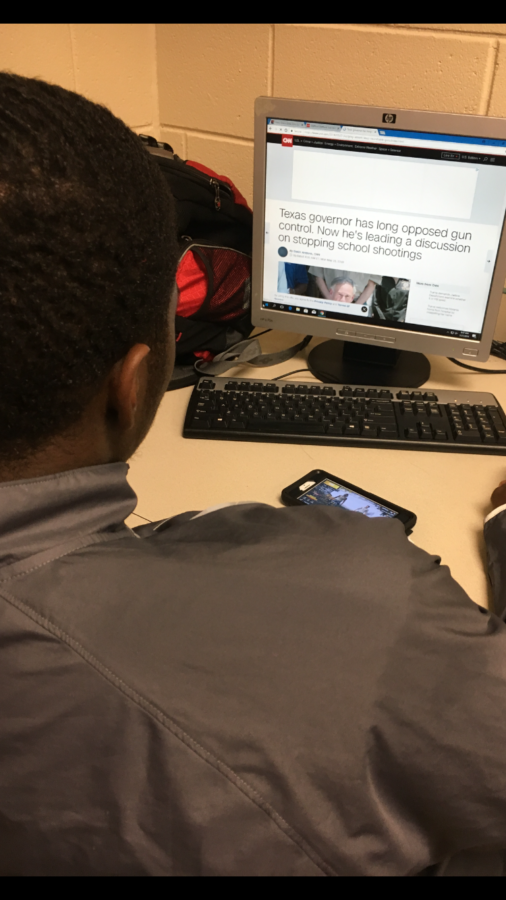Thoughts and Prayers
A closer look at the change of domestic terrorist through the last half century.
A high school junior reads in on the latest school shooting.
Over the last 40 years, domestic terrorism has become a fact of life in the United States. It has torn apart families and polarized the American people. School shootings or other acts of terrorism now happen on a weekly basis across the country and have come to effect a majority of Americans in thought, action, or loss. These acts don’t limit themselves to big cities either; shootings, bombings, and mass killings can happen almost anywhere, from secluded ranches in Texas to major cities on the East Coast. What is common in these acts of terrorism is an underlying pattern of hate and disillusionment. This hate is stimulated by a few radicals belonging to any extremist group with the ability to reach out and emotionally connect to, primarily, disenfranchised and usually white, men. These men usually have a lack of identity and are looking for something to belong to. Extremist recruiters utilize their youth, inexperience, and need to belong by giving them a home of hate and instilling a higher purpose in their lives. This tactic is used throughout the world: the white supremacist movement in the United States, The Islamic State in Syria, and Boko Haram. In the United States this form of recruitment was prominently displayed in the mid 1980’s in Northwestern Oregon by groups like The Order, a white supremacist group seeking to trigger a revolution by the white race to “reclaim” their country. Their leader, Rob Mathews recruited white men and robbed banks and armored Vehicles across the west coast in an attempt to arm themselves for their revolution.

Two high school seniors look comfortable at their high school despite growing dangers at public institutions.
Many members of the group turned themselves in after they murdered Jewish liberal radio talk show host Alan Berg. The leader of the order however boarded himself up in his New York home and refused to leave the building. This resulted in a long standoff between himself and the FBI, during which an agent and Berg himself died. Terrorism like this was characteristic of the time, acts of violence inspired by nationalist or religious motivation. This can be seen in the Waco massacre in Waco Texas, led by David Koresh and resulting in the deaths of 80 people, as well as the siege at Ruby Ridge. While former acts of terrorism were done for a reason, what is startling is that the acts of domestic terrorism that are occurring today seem to lack that same motivation. Every week there is a new school shooting and most have little impact on the national morale or legislation. Those that commit these crimes lack any organization-related, hateful motivation and rarely can explain their actions.
Many people describe this as the “Columbine effect.” The shooters at Columbine tried to show up Timothy McVey, who visited Waco during the siege, became infuriated by what he saw and planted a bomb in the Murrah Federal building killing 186 people. The Columbine shooters did not desire to support white supremacy or assert their message, they wanted to out-do McVey. The majority of mass shootings since Columbine have carried this lack of reason or motive. This makes combating the issue difficult. The shooters have no motive, they now simply see mass shootings as a challenge and students across the country have become targets.



